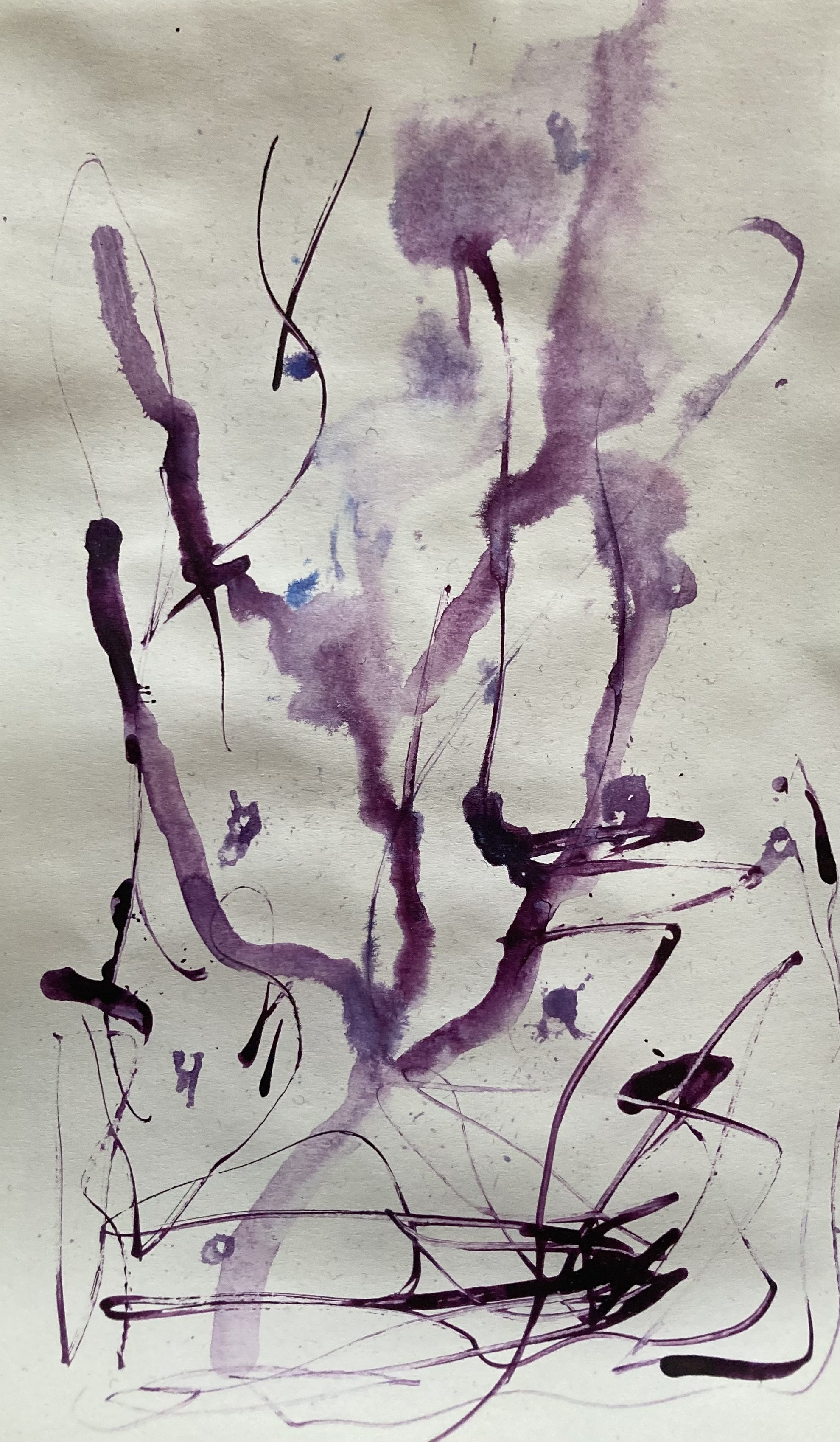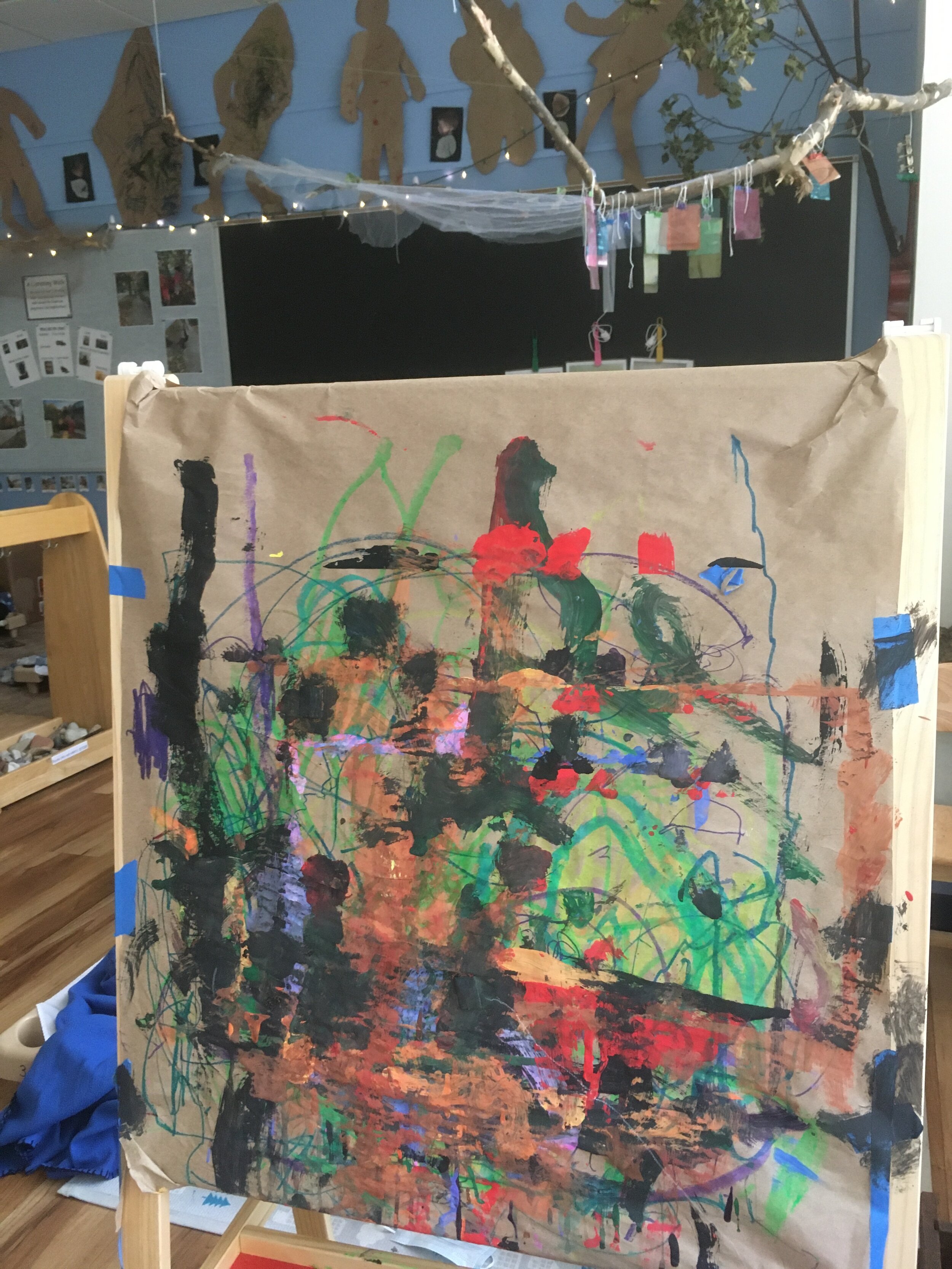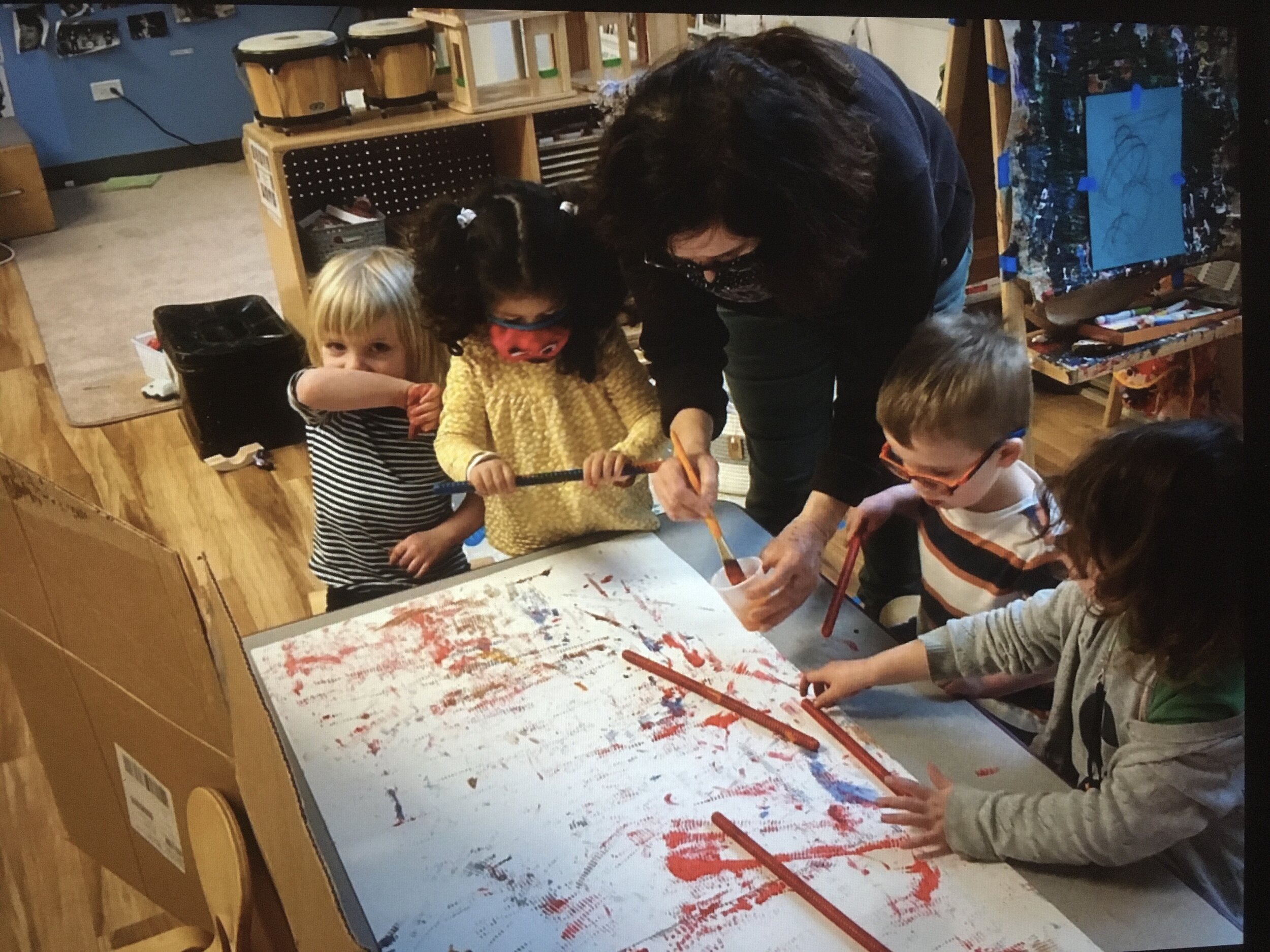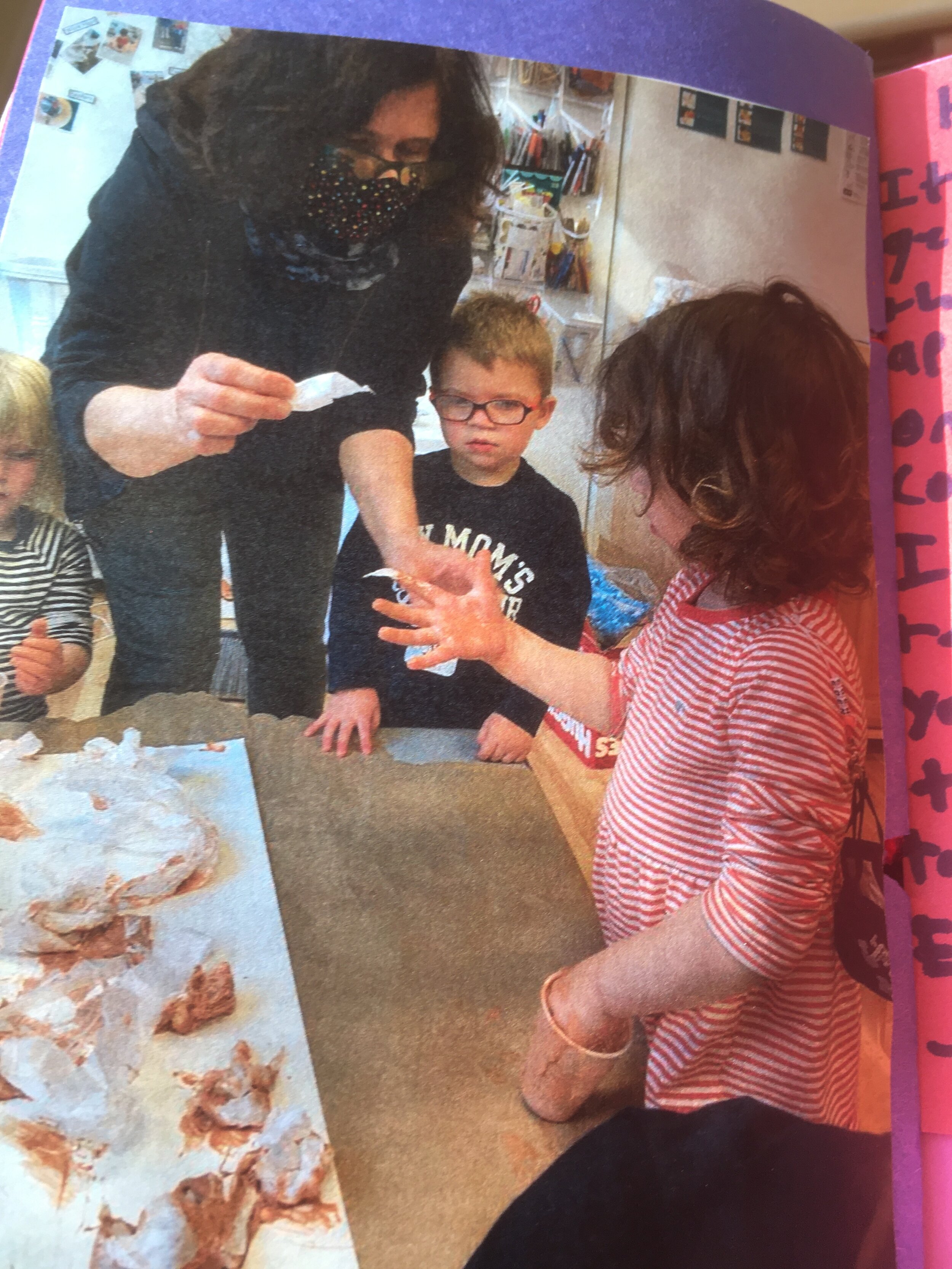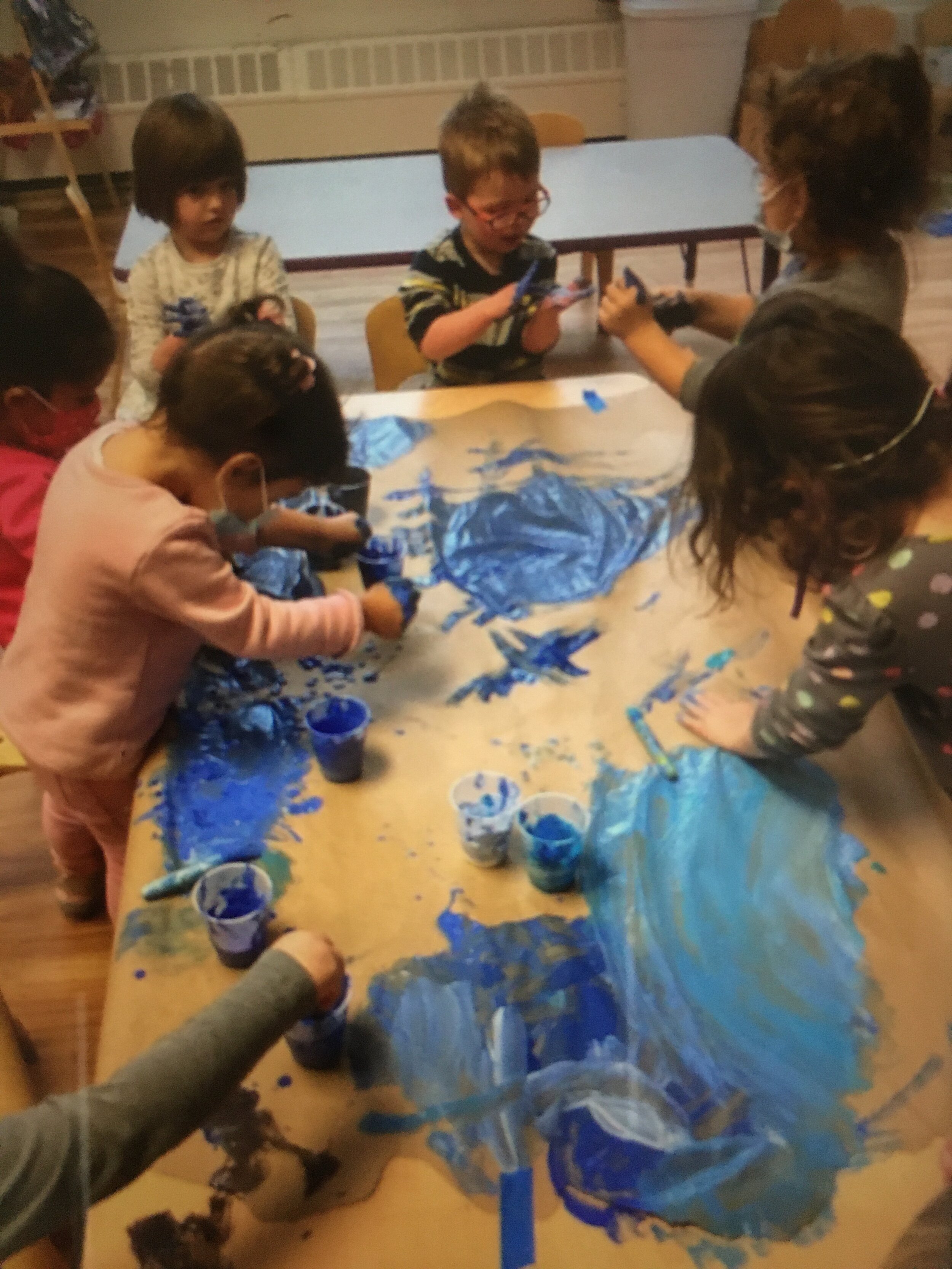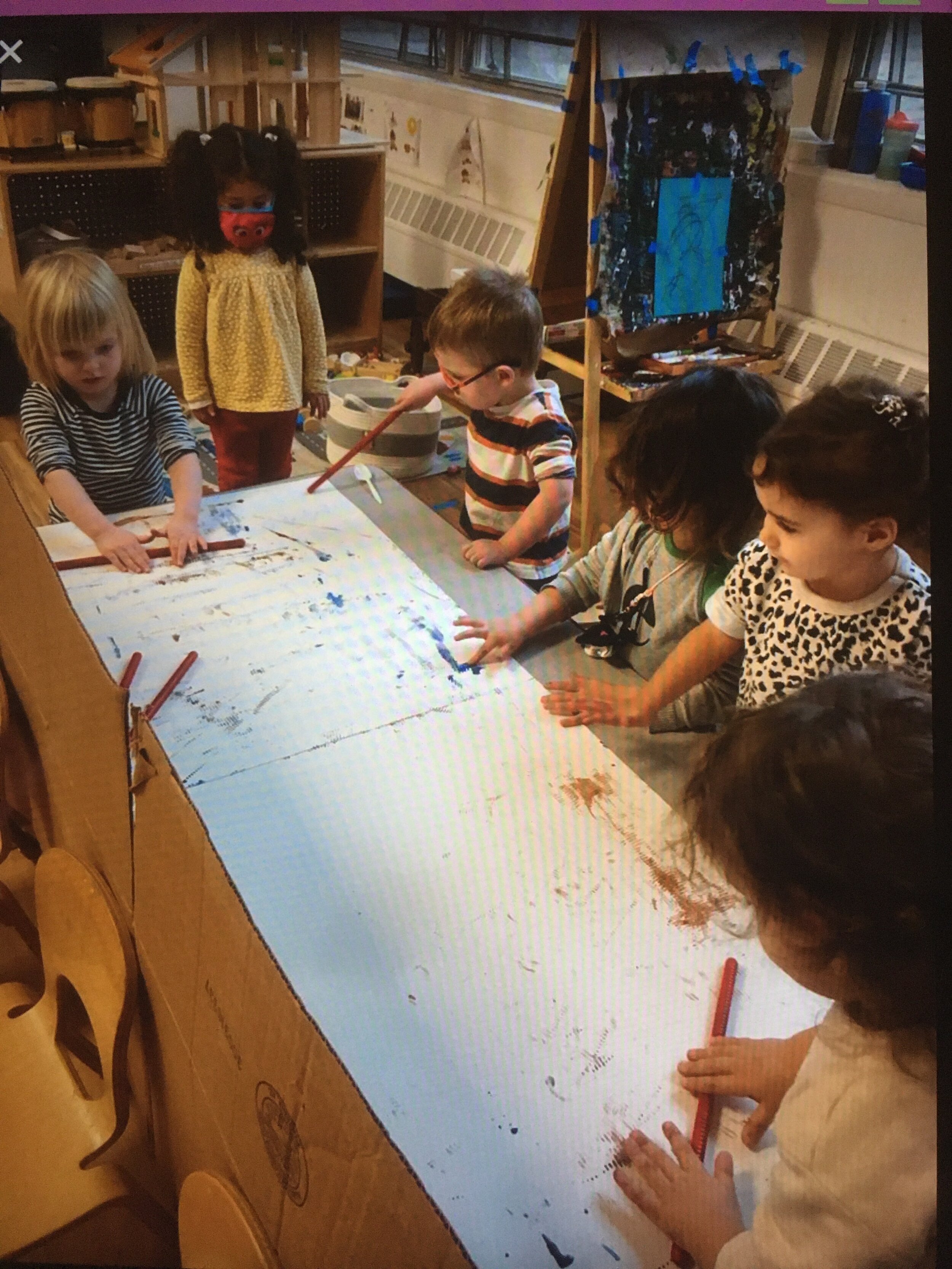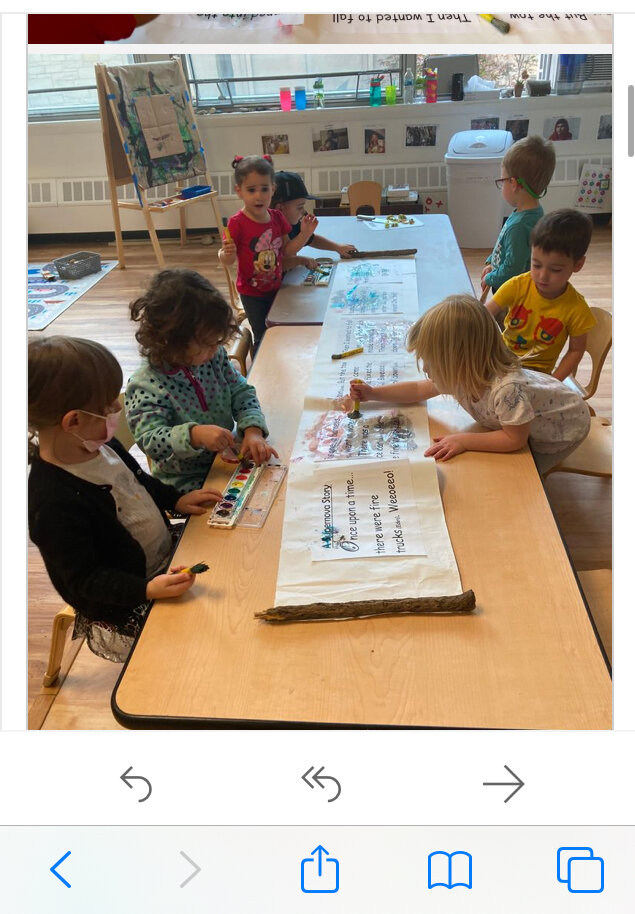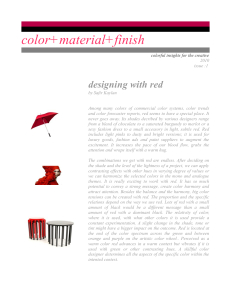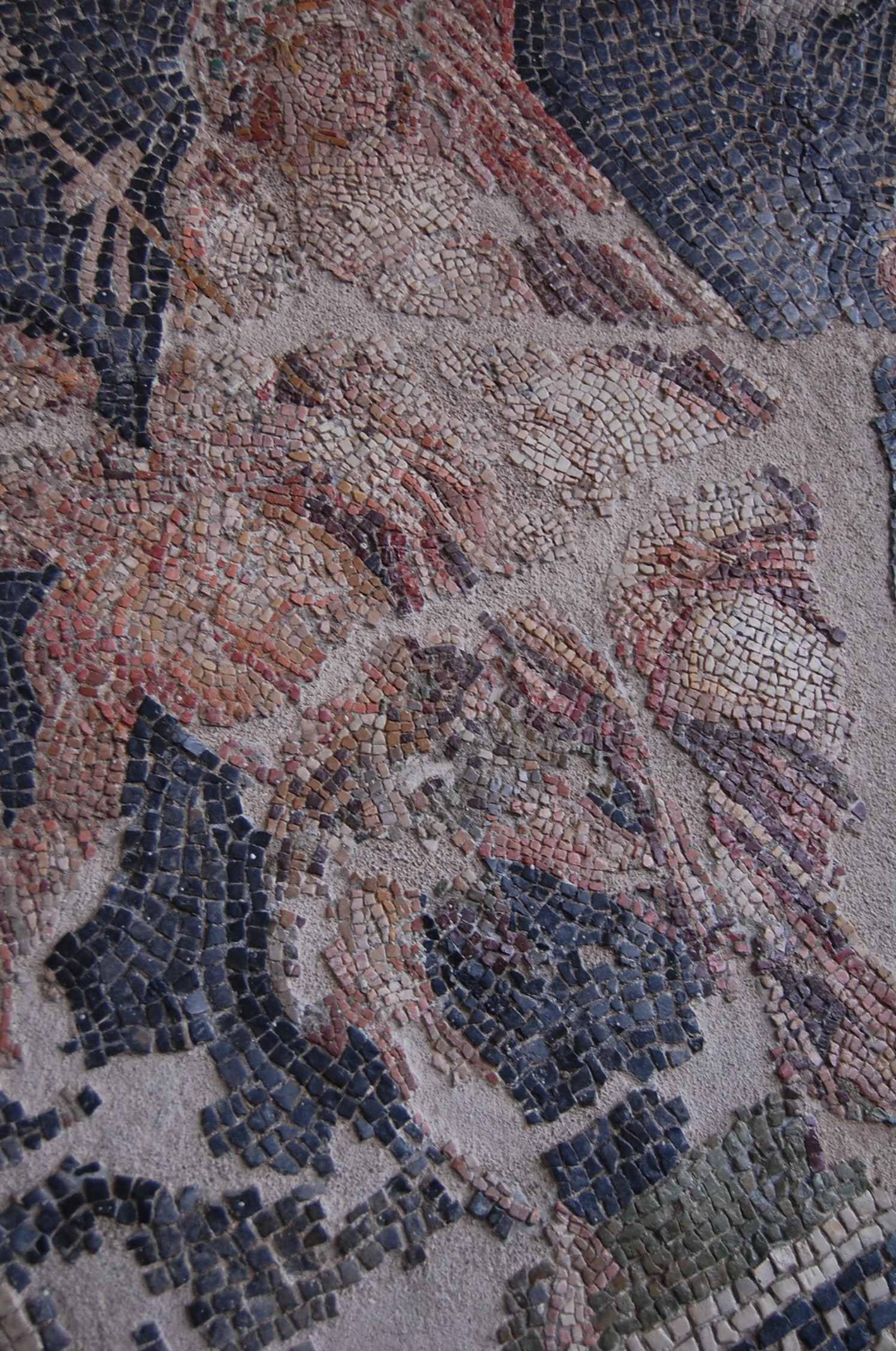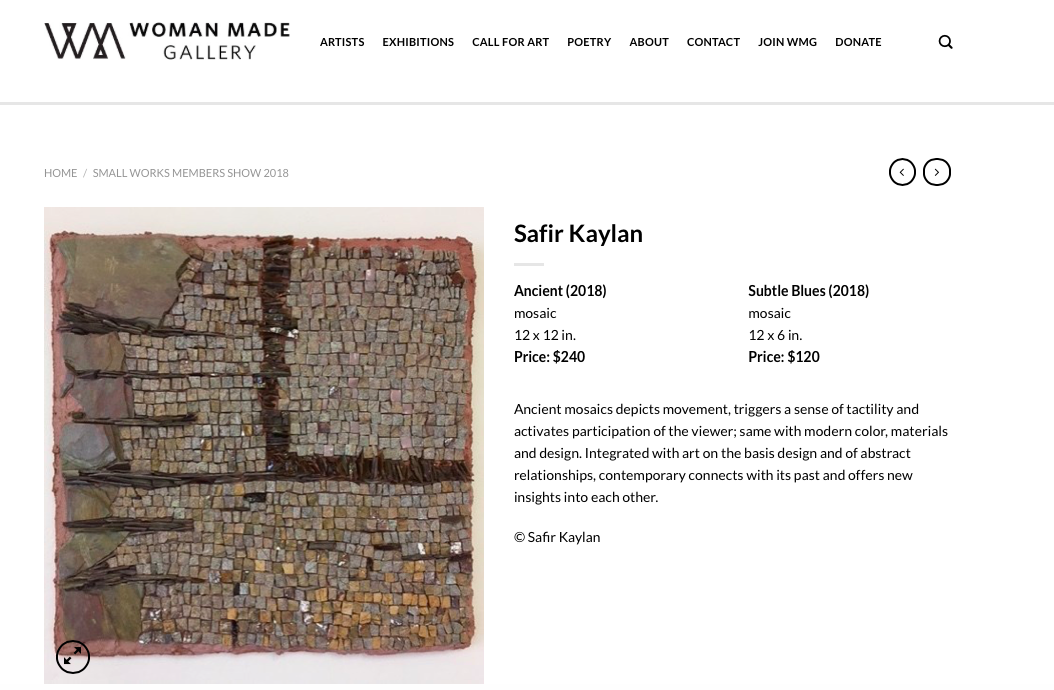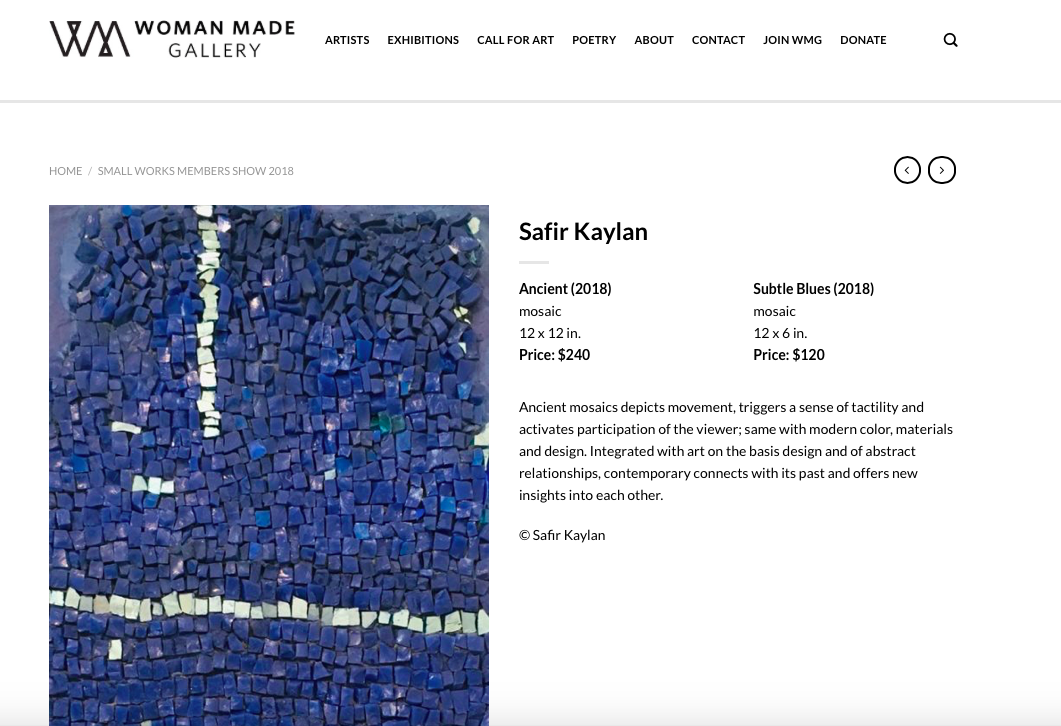History of drawings, from Renaissance to the Contemporary today, is a new interest for me. Form without a content, and in addition to the lightness of the mediums that I use, motivates me to work this new challenge through, to eventually discover how it is going to develop for me, let’s say, into a painting.
Woman Made Gallery, 2022
This is an exhibition that I yearly participate. After a trip to an ancient site along the Aegean Coast of Turkey, I created a triptych of the site, part abstraction, part what is seen here. I only submitted one of the three works and this one was used for the Press Release, 2022 exhibition.
Press Release, 2022
Iona is where all started
At my early stages of my artistic development, I aimed to experiment with materials and processes while reflecting on my artistic growth focusing on the process as a dialogue between the maker and materials.
From the beginning, abstraction was my dominant way to convey. My early artworks were only the depiction of the technique itself with some design and art elements. While acquiring the technique to represent concepts took me a while to develop. Some of these technical developments fell under minimal and simple abstraction by only sequencing fragments in a linear manner or by lines crossing each other or branching out to edges. This focus on the aesthetics, like design elements and some principles, like symmetry, repetition, color impact and harmony, contrast and movement gave me a kind of direction, yet to not be fully defined and understood in terms of the artistic and intellectual development. The artistic process that is not aiming the visual realism as the end result, but rather considering it as a journey has more potential to create compelling and convincing images. I enjoyed this process.
I have always admired the simplicity of form and her fascination with geometry, brevity of line and muted color palettes of Agnes Martin, a pioneer in abstract painting. Interpreting this into mosaic did not produce the same aesthetic feel, due to the nature of the material’s physicality . Yet, I thought I took one step forward to some level of meaning, context and purpose. Her silence spoke to me. Yet, I was still drawn to dualities like ancient versus modern, simplicity versus chaos, order versus disorder, conversation/preservation versus destruction. I also started reading about Cy Twombly. His complicated language combined with his interest in the Greek and Roman civilizations and mythology and how he used poetry, philosophy and literature within his artwork opened my eyes into something new.
Bringing ancient and modern together was my occupation from the start. Finally, I did get an angle in terms of movement, tactility and interactivity as the common elements between the two periods. Understanding both past and present to find a new set of reference to resonate became my new intent for the visual experience. Mosaic was more than a technique, but also a model of communication. Mosaic lived a long life due to the durable materials, but also by restoring the missing tesserae pieces to make mosaic an ongoing work for the coming generations. Ancient mosaics were also not only visual, but a multiplicity existed in terms of tactility and sensations. Activating perceptions by creating movement, a dynamic design also meant viewer’s participation.
Recently, a Relational aesthetics artist Liam Gillick’s dynamic contradiction and refusal viewpoints and contemporary artists Anne and Patrick Poirier ‘s metaphorical build ups of the archeological shapes and forms to evoke viewer’s memories are some of the ideas that keeps my mind busy for the next search of meaning to compose interactions among colors, forms and materials.
Searching, 2021 cement, clay, plaster cloth, acrylic over a thin board
Searching, 2021
Interdisciplinary approach to art education within the field of humanities is my philosophy. My map is messy and each word wants to connect with other words, yet my map is like a puzzle or a game of Scrabble; still looking to find meaningful and significant connections to discover novel perspectives and multidisciplinary angles. The story behind the words are my acquaintances with various subjects of interests over the years without any predetermined intention, but by only showing great curiosity for each discipline such as art history, mythology, color science and travel to archeological sites. Having experienced this, I like children to find their core interests at younger age and work on it with deliberate enthusiasm. As I have started my search too late and running three steps behind today, I like children to use art as an entry point to find their own unique voices in life as early as possible.
The background of my map/work represents the past, an ancient terrain of layered information still yet to be uncovered while part of it has been excavated and represented by two separate pieces in shape of fragmented mosaics. I like to ask questions using archeology as a act of excavation and burial, kind of a metaphor of unearthing, assessing the past as well as our place in the world today.
The opposition between old and new, the duality of the notions such as ancient and modern is also part of the art education like its elements, light/dark, symmetry/asymmetry and dissonance/consonance and etc. I would like to teach these principles and elements in a story format and see how each child’s own interest shapes about what kind of connections they would like to make.
While I survey the surface of the past, I also notice how unsettling the present is. Uncertainty and ambiguity of the past resemble the state of our contemporary issues. I would like children focus on their own interest of issues and develop stories by making meaningful connections with other fields. If it is an environmental concern, story making may include other concerns such as social and economical issues from the past or imagined future.
In some cases, complete representation of the past is not possible. Unproven periods of the past are depicted based on hypothesis and theories, thus using imagination and wide range of knowledge from other disciplines to fill these gaps becomes an important skill. In this case, abstract expressionism gives me freedom to render depth and complexity to tell visual stories. My process also includes simple materials such as paper, wire, stones, clay which mediates for more discoveries in art education. Gradually introducing new materials into the work narrates and renews the story into meanings, such as textural, “wrapping” and “healing” feature of the plaster/gauge cloth and the earthy and lasting effect of the clay. My challenge is to find methods and techniques that are development appropriate for early childhood education.
My art and art education philosophy looks puzzled and incoherent like individual mosaic fragments. Each piece has the potential to become part of a finalized work. This freedom of selecting pieces among many is liberating, yet it is also confining in terms of having no answers at all. My mind chooses to keep asking questions while moving and circling around the senses with an eye for searching, researching and discovery. I like children to do the same with fresh eyes.
What ocean, rhythm sticks and easel have in common
Preschoolers are amazing with projects that reflect their interests, curiosity and imagination.
Roman face in the eyes of children
I have been reading the story of Antinous bust at the Chicago Art Institute blog this morning, about of a new plaster cast of his features with new findings, I was also wondering how children would interpret, in their perception, of faces of ancient characters.
The discovery starts with materials, environment and curiosity of making connections. Marble was the most used kind of material for Roman sculptures. From the original material, we move to casting, plastering, reproduction of plastering and eventually find out that the process produces similarities of Antinous features in different material and techniques, as well as it produces differences. Due to the unique capabilities of each medium and technique of reproduction of the original, the improvement becomes a skill of art and science in researching the right interpretation of his face.
“a characteristic oval face, smooth complexion, deep-set eyes, full lips, and distinctive hairstyle of thick, wavy locks. Because of the relatively uniform nature of Antinous sculptures, scholars can fairly easily identify his portraits—even when they are missing the original face.”
Source : Chicago Art Institute Blog
Unswept Floor
Stepping on the unleveled massive stones, acrobatic balance of thousand years while looking down and reading its bumps, ridges, marks and sinks, engraved in its material memory convey an escaping sense of lostness.
Strolling through the Ancient Greek and Roman ruins is not like a leisurely promenade on a sunset boulevard or like sitting and people watching at a Parisian coffeehouse. It is a quiet reflective presence that oozes through the soil and breathable through the air elevate senses with subtle but questionable remnants of this faraway land. Layers with coincidental debris of history covering secrets with multiple strata of rock particles, carried by old winds, waters and ice. Aroused by the physical closeness, this affection looms towards the humanity is not an accidental experience. ( excerpt from one of my essays)
Streets of Ephesus
Ancient ruins, like passing moments of running thoughts..
Short Statement
Ancient mosaics depicts movement, triggers a sense of tactility and activates participation of the viewer; same with modern color, materials and design. Integrated with art on the basis design and of abstract relationships, contemporary mixed media mosaics connects with its past and offers new insights into each other. By synthesizing different materials, and color interactions, contemporary mosaics urge the impulse of creating new stories.
Mosaicist Layers
The combinations we get with red are endless.
color studies aim to produce distinct effects. where, how much and how often we use a color defines the expression.
Beauty of the fragments
Asàrotos òikos mosaic ( at the Gregoriano Profano Museum )
“This splendid mosaic, made up of tiny pieces of glass and coloured marble once decorated the floor of the dining room of a villa on the Aventine Hill in Rome at the time of the Emperor Hadrian. The decorative theme is that known as asàrotos òikos, or "the unswept floor", created in the second century B.C. by Sosos of Pergamon and here by the artist Heraclitus, who has signed his name. The artist has created a floor which seems to be covered with the debris of a banquet, the remains that would normally be swept away: one can identify fruit, lobster claws, chicken bones, shellfish and even a tiny mouse who is gnawing a walnut shell. The solidity of the objects shown has been created by a clever use of colour to create shadows against the white background of the floor. Where the room would originally have had an entrance there is a design with theatrical masks and ritual objects; at the centre there is part of a complex Nile scene.”
Roman Mosaics, in details
Izmir Archeological Museum’s mosaic collection includes the Aegean Coast, Roman Times mosaics. One of my favorite ones here is a close-up of a scene including Dionysus, Ariadne and Pan.
Woman Made Gallery, Chicago : small works member show, 2018
being part of this group show at Woman Made Gallery, Chicago makes my 2018 a very good year!
Fall in love with Nature and Culture, drop in mosaic pendant workshop
Spurlock Museum of World Cultures at Illinois: Sundays
“This fall, we’re exploring connections between nature and culture with 4 month-long series of programs on water, trees, rocks and minerals, and ice and snow. We’ll look at the ways different cultures have used natural resources, explained natural phenomena, and found inspiration in the world around them. Examine artifacts, hear stories, and dig into sample materials. Experts from around town and campus will offer demonstrations and discussions. All programs are free and available on a drop-in schedule.”
Ekphrasis
Socrates explains :
"You know, Phaedrus, that is the strange thing about writing, which makes it truly correspond to painting.
The painter's products stand before us as though they were alive,
but if you question them, they maintain a most majestic silence.
It is the same with written words; they seem to talk
to you as if they were intelligent, but if you ask them anything
about what they say, from a desire to be instructed,
they go on telling you just the same thing forever".
The Alexander Mosaic, dating from circa 100 BC, is a Roman floor mosaic originally from the House of the Faun in Pompeii.[1] It depicts a battle between the armies of Alexander the Great and Darius III of Persia and measures 2.72 by 5.13 metres (8 ft 11 in × 16 ft 10 in).[2] The original is preserved in the Naples National Archaeological Museum. The mosaic is believed to be a copy of an early 3rd-century BC Hellenistic painting.[3]
mosaic art and design direction, 2018
To investigate subject areas of curiosity takes time. I did not have a plan, or a map for a specific goal. I was only letting go to the search without any deadline or objective.
After three years and five full of notebooks, this is only a scratched surface, but also one step forward for a more defined direction.
| Contemporary ways of seeing the Art of Mosaic |
mosaicist notebook
quite excited about this portfolio book that I have finished today!
mosaicist notebook is about my daily observations, hands and eyes on trials, sketches, experiments, ideas and any other attempts to search essence of this ancient art form, mosaic, in the context of contemporary with a twist of my own in abstraction.
Exhibition Title: Modern Mosaics of Ravenna

image from the exhibition "Modern Mosaics of Ravenna," held at the Museum of Contemporary Crafts, March 24 - May 14, 1961.
designed and executed Mario Deliugi
Read Moreterm : mosaics in time

from in situ to the museum.
Read Moreworklines

where does the line come from
Read More
